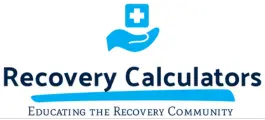Fentanyl is a powerful synthetic opioid that is much stronger than heroin and morphine. Originally developed for pain management in cancer patients, it is now widely misused, leading to a crisis of addiction and overdose deaths. Understanding what fentanyl is and how it is used can help protect yourself and your loved ones from its dangers.
The rise of fentanyl use has led to increasing numbers of overdoses and fatalities. Even a small amount of fentanyl can be lethal, making it one of the most dangerous drugs on the streets today. Identifying the signs of fentanyl abuse and knowing how to respond to an overdose is crucial for saving lives.
Recovery from fentanyl addiction is challenging but possible. With the right treatment and support, individuals can overcome addiction and work towards a healthier life. Detoxification, medical support, and aftercare are key parts of a successful recovery plan.
By understanding the risks and learning about effective treatment options, you can take proactive steps to prevent fentanyl abuse and support those struggling with addiction. This article will provide essential information about fentanyl and explore ways to help those affected by this powerful drug.
What Is Fentanyl and How Is It Used?
Fentanyl is a synthetic opioid that was originally created for pain management, especially for cancer patients who need strong relief. It is many times more potent than other opioids like heroin and morphine, which means it can alleviate severe pain in very small doses. Doctors may prescribe it in various forms, including patches, lozenges, and injections.
However, fentanyl’s high potency also makes it a target for misuse. It is often illegally manufactured and sold on the black market, sometimes mixed with other drugs like heroin or cocaine to increase potency. This mixing is particularly dangerous because users may not even realize they’re consuming fentanyl, leading to unexpected overdoses.
Street names for fentanyl include “China White,” “Apache,” and “Tango & Cash.” Because of its potency, even a tiny amount can be deadly. The drug works by binding to the body’s opioid receptors, which control pain and emotions. Repeated use can lead to dependence and addiction rapidly, making it a highly dangerous substance.
The Dangers and Effects of Fentanyl on the Body
Fentanyl is extremely dangerous because of its high potency and the risk of overdose. Even a very small amount can cause life-threatening symptoms. The drug depresses the central nervous system, leading to slowed or stopped breathing, which can result in oxygen deprivation and death if not treated immediately.
The effects of fentanyl on the body are numerous and severe. Physical symptoms of fentanyl use can include drowsiness, confusion, constipation, and nausea. In more extreme cases, it can lead to unconsciousness and respiratory failure. Because fentanyl is so potent, the margin between a “therapeutic” dose and a toxic dose is very small, increasing the risk of overdose significantly.
Moreover, long-term use of fentanyl can lead to tolerance, where the user needs more of the drug to achieve the same effect. This often leads to increased use and higher risk. Chronic use can also damage the body over time, affecting organs and leading to various health issues. Withdrawal from fentanyl is also intense, requiring medical supervision and the use of tools like COWS (Clinical Opiate Withdrawal Scale) to manage detox safely. Understanding these dangers can help individuals make informed decisions and seek help before it’s too late.
Recognizing and Handling Fentanyl Overdose
Recognizing a fentanyl overdose early can save lives. Symptoms of an overdose include severe drowsiness, slow or difficult breathing, small pupils, and loss of consciousness. If you suspect someone is experiencing a fentanyl overdose, it’s important to act quickly.
Here are the steps to take:
1. Call 911 Immediately: Time is critical in an overdose situation. Get emergency medical help right away.
2. Administer Naloxone: If available, naloxone (Narcan) can temporarily reverse the effects of the overdose. It helps restore normal breathing and wake the person up.
3. Provide Basic Life Support: While waiting for emergency services, perform CPR if the person isn’t breathing or doesn’t have a pulse.
4. Stay with the Person: Monitor their breathing and condition until help arrives. Try to keep them awake and alert.
Healthcare professionals often use the COWS (Clinical Opiate Withdrawal Scale) to assess the severity of opioid withdrawal during and after an overdose. This helps in providing the necessary treatments and support. Detecting an overdose quickly and handling it appropriately can make the difference between life and death.
Treatment Options and Recovery from Fentanyl Addiction
Recovering from fentanyl addiction involves a comprehensive approach. Treatment usually begins with detoxification, where the body rids itself of the drug. Because of fentanyl’s potency, medical supervision during detox is essential. Tools like the COWS (Clinical Opiate Withdrawal Scale) are important to manage withdrawal symptoms safely.
After detox, personalized treatment plans are developed. These can include:
– Inpatient Drug Rehabs: Structured environments that offer 24/7 care and support for individuals.
– Luxury Rehabs: Special facilities that provide high-end, comfortable settings for recovery, focusing on both mental and physical health.
– Outpatient Programs: Allow patients to receive treatment while living at home, enabling them to maintain work or family obligations.
Therapies such as CBT (Cognitive Behavioral Therapy), group therapy, and individual counseling are often part of treatment plans. These therapies help patients understand the root causes of their addiction and develop healthy coping mechanisms.
Medication-assisted treatment (MAT) may also be an option. This involves using medications like buprenorphine or methadone to reduce cravings and withdrawal symptoms. Regular monitoring with medical tools like SMAST (Short Michigan Alcoholism Screening Test) can help ensure the effectiveness of the treatment.
Conclusion
Fentanyl is a powerful and dangerous drug with serious risks of overdose and addiction. Recognizing the signs of an overdose and knowing how to respond can save lives. Understanding the comprehensive treatment options available can guide you or your loved ones toward recovery.
Recovering from fentanyl addiction requires a multi-faceted approach, including detox, therapy, and ongoing support. Tools like CIWA, COWS, and SMAST play a vital role in assessing and treating addiction effectively.
If you or someone you know is struggling with fentanyl addiction, it’s crucial to seek help right away. Visit Alcohol Withdrawal Calculator to explore our range of medical calculators and resources to aid in your recovery journey. Take the first step towards a healthier, drug-free life today.


